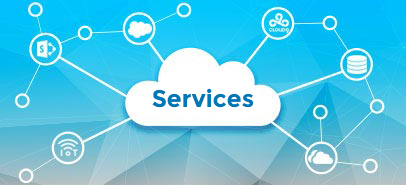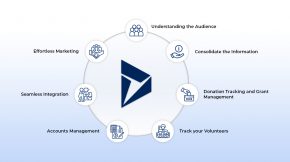Data Engineering with Databricks: Tools, Best Practices, and Use Cases
These days, companies deal with huge amounts of data. They need to turn that raw information into insights they can actually use. But here’s the problem: pipelines break, tools don’t talk to each other, and workflows get messy. Innovation slows down. Decisions get delayed.
Data Engineering with Databricks offers a way out. It combines the freedom of data lakes with the speed of data warehouses. This guide shows you the tools, practices, and real-world applications that will shape how enterprises handle data in 2026 and beyond.
What Makes the Databricks Lakehouse the Foundation for Modern Data Engineering?
The Lakehouse pattern is gaining ground fast. It’s becoming the go-to architecture for modern data platforms. At the center of it all sits Delta Lake, a powerful engine that changes how companies think about storing and using data.
A Lakehouse gets rid of the old split between data lakes and data warehouses. You don’t need separate systems anymore. Everything lives in one place. This matters a lot for Data Engineering with Databricks because it means structured and unstructured data can sit together. You can analyze them as one.
The design rests on a few important ideas:
- Unified Architecture: It mixes the low cost and flexibility of a data lake with the ACID transactions and governance features of a data warehouse. Your data stack gets simpler. You cut out redundancy.
- Delta Lake: This open-source storage layer makes data lakes reliable and fast. It gives you ACID transactions, metadata handling that scales, and time travel (so you can see older versions of your data). These features are basic building blocks for solid databricks engineering.
- Separation of Compute and Storage: One core rule of the Lakehouse is this: compute and storage work independently. You can scale each one on its own. That leads to real cost savings and flexibility. Understanding what is microsoft azure databricks helps you see why this cloud-native design works so well.
When you adopt this model, workflows get smoother. Latency drops. Teams work with data that’s fresh and trustworthy. That’s why Databricks for Data Engineering makes sense for companies that want systems built to last and scale.
Which Tools Are Essential for Effective Databricks Data Engineering?
To get the most out of the Lakehouse, data teams need to master a specific set of data engineering tools inside the Databricks world. These tools help you set standards, work together better, and run complex workflows without breaking a sweat.
Standardize Code with Databricks Repos
Databricks Repos brings Git right into your workspace. It completely changes how teams manage code.
Before, people relied on scattered user workspaces. That led to duplicate code and governance headaches. Repos fixes this with a centralized, version-controlled approach. It’s a must-have for professional databricks data engineering. You get great support for GitHub, Bitbucket, and Azure DevOps. It enforces coding standards, makes peer reviews easy, and tracks every change you make.
Databricks Workflows Orchestrating Complex Pipelines
Databricks Workflows give you power when you need to build and manage data pipelines. A single Databricks Job can contain many tasks. Each task might run a notebook, a JAR, or a Delta Live Tables pipeline.
You can set up dependencies between tasks. That creates a complete, organized workflow. For really complex pipelines that respond to events, some companies use external tools like Apache Airflow to kick off individual Databricks Jobs. But keeping orchestration in one spot usually makes operations simpler.
Role of Unity Catalog in Data Governance
Unity Catalog is how Databricks handles data governance. It’s a unified solution that brings everything together.
You get fine-grained access control, a central data catalog, and data lineage features across all your workspaces. Instead of managing access at the storage bucket level, teams use familiar SQL GRANT statements. You control who sees which tables, views, and functions. This makes security management simpler and shows you exactly how data moves through your system. That’s critical when you’re debugging or dealing with compliance.
Getting the most from Unity Catalog sometimes means changing how you think. For example, you reference tables by name instead of by file path.
What Are the Best Practices for Building Robust and Efficient Data Pipelines?
Any powerful platform needs guiding principles if you want long-term success. The Best Practices for Data Engineering on Databricks fall into four areas: operational excellence, reliability, performance and cost optimization, and security.
Follow these, and your pipelines won’t just work. They’ll scale, stay resilient, and run efficiently.
1. Fostering Operational Excellence
Operational excellence in Data Engineering with Databricks means creating processes that are standardized, reusable, and easy to maintain.
Push your teams to build common libraries and frameworks for everyday tasks. Things like ingestion, logging, and monitoring. This speeds up code reuse and helps you deliver projects faster. It’s also important to write code that knows what environment it’s in. You want to move pipelines easily from development to UAT to production. Don’t create separate notebooks for each environment that become impossible to maintain.
2. Ensuring Pipeline Reliability
Reliability comes first. Delta Lake gives you ACID guarantees, but complex workflows with lots of dependencies need solid monitoring and alerts.
Set up notifications for when critical jobs fail. But be selective. You don’t want “alert fatigue” where people ignore messages because there are too many. A key rule is to “fail fast.” Avoid silent failures where a job says it succeeded even though something broke inside.
When multiple processes write to the same place at once, you might see exceptions like ConcurrentAppendException. Adding an exponential backoff-and-retry system can really cut down on pipeline failures. It makes your databricks engineering work more stable.
3. Optimizing for Performance and Cost
You need to keep optimizing if you want to control costs without losing performance.
One mistake people make is using the same cluster setup for every job. Teach your developers how to size job clusters properly. Take advantage of things like Graviton-enabled instances, GPU acceleration, and the Photon runtime. Update to the latest Databricks runtimes regularly so you get new features and performance boosts.
Commands like VACUUM help you optimize storage, but don’t go overboard. Avoid being too aggressive with settings like RETAIN 0 HOURS. That can cause data consistency problems for concurrent readers. Good Data Engineering with Databricks balances optimization with reliability.
4. Implementing Strong Security
Security needs attention at both the infrastructure level and the data level.
Always use Databricks Secrets to store credentials, tokens, and other sensitive info. Never hardcode them in notebooks. Databricks automatically hides secrets from notebook outputs so they don’t accidentally get exposed.
For complete governance, think about moving to Unity Catalog. It centralizes access control and tracks lineage. This approach to Data Engineering with Databricks protects your data at every step.
How Do Enterprises Apply Databricks for Real-World Impact?
You measure a platform’s real value by how it gets used in practice.
The flexibility of Data Engineering with Databricks powers all kinds of enterprise solutions. It turns messy data challenges into competitive advantages. The platform handles different workloads on one unified setup, which makes it a strong engine for innovation. Looking at various Databricks use cases shows you just how much it can transform different industries.
- Large-Scale Data Processing (ETL/ELT): Companies use Databricks to build scalable, automated data pipelines. These pipelines pull data from hundreds of sources, transform it in the Silver layer, and organize it into business-ready Gold tables for analytics. The serverless compute and optimized Spark engine make it possible to process petabytes of data without breaking the bank.
- Real-Time Analytics and Streaming: In retail and finance, you need insights right now. Databricks, working with Delta Live Tables and Structured Streaming, lets you build pipelines that process data as it comes in. This powers things like real-time inventory tracking, fraud detection, and dynamic pricing.
- Machine Learning at Scale: Databricks for Data Engineering fits perfectly with ML workflows. Data scientists use the same platform to prep data, train models with MLflow, and put them into production. This unified approach speeds up the ML lifecycle from start to finish. It’s a key part of databricks engineering.
- Business Intelligence and Reporting: The Gold layer of the Lakehouse acts as a single source of truth for BI tools like Power BI and Tableau. Databricks SQL provides a fast query engine. Analysts can run complex queries right on the data lake and get warehouse-like speed.
How Can You Ensure Data Quality and Governance in Your Pipelines?
Data quality isn’t something you think about later. It’s a basic requirement if you want analytics you can trust.
Poor data quality quietly destroys trust. It leads to bad decisions and creates compliance risks. The practice of Data Engineering with Databricks gives you a solid framework for building quality and governance right into your pipelines.
Databricks Lakehouse Monitoring is a key feature. It automatically creates profiling and drift metrics for Delta tables. You can watch for problems like sudden null spikes or changes in data distribution and get alerts. Delta Live Tables (DLT) goes further by letting you define data quality rules (called “expectations”) right inside your pipelines.
You can set up DLT to drop bad data, quarantine it, or stop the pipeline completely when it finds invalid records. This active approach is central to understanding how databricks improves data quality. It stops bad data from polluting your downstream systems and keeps your analytics trustworthy.
How Does Integrating Databricks with Other Systems Amplify Its Power?
Databricks is powerful on its own. But it really shines when you connect it to your broader tech ecosystem.
Isolated data platforms often turn into expensive, inefficient tools. Smart integrations automate workflows, improve collaboration, and extend the reach of your data insights.
Take Git integration through Databricks Repos, for example. It makes development more professional with version control and CI/CD automation. Connecting with tools like ServiceNow can automate how you handle incidents. A data quality alert becomes a ticket assigned to the right team in seconds.
When you integrate with BI tools and custom applications through the Databricks API, you can embed analytics right where people work. This complete approach to advanced data engineering with databricks transforms it from just an analytics tool into the central nervous system of a data-driven company. The opportunities you get from a well-planned 6 databricks integration strategy are huge and powerful.
How Beyond Key Helps Here
At Beyond Key, we connect Databricks’ potential to your business results. As certified Databricks partners, our consultants use our own frameworks to speed up timelines and build data architectures ready for the future. We focus on turning your data into a strategic asset through customized databricks consulting services. We work on scalable data pipelines, ML integration, and solid governance. Our know-how in databricks engineering means your solutions get implemented efficiently. Plus, we give your teams the knowledge they need for long-term success.
Conclusion
The world of Data Engineering with Databricks is changing fast. We’re heading toward a future built on automation, unified governance, and seamless integration.
When you embrace the Lakehouse architecture, use essential tools like Delta Lake and Unity Catalog, and stick to best practices, you build data systems that are powerful, reliable, and cost-effective. This journey needs a smart approach. One that puts business outcomes first and builds a culture of operational excellence.
Looking ahead to 2026, the ability to use data effectively through a unified platform will be what sets companies apart. Mastering databricks engineering is how you unlock that potential.
Turn your data strategy into real-time insights with our tailored Databricks consulting.
Request a ConsultationFrequently Asked Questions
1. How does Databricks handle concurrent writes to the same Delta table?
Databricks uses an optimistic concurrency control model and a commit service to handle simultaneous writes. When conflicts happen (like two jobs trying to update the same files), one succeeds and the other fails with a retriable exception. The smart move is to add exponential backoff-and-retry logic to your write operations. This handles conflicts smoothly and keeps your pipeline reliable without you having to step in manually.
2. What is the difference between Databricks Jobs and Delta Live Tables (DLT)?
Databricks Jobs are a general tool for running notebooks, scripts, or JARs on a schedule or when triggered. Delta Live Tables (DLT) is different. It’s a framework built specifically for reliable data pipelines. With DLT, you define what transformations you want, and Databricks handles the task orchestration, infrastructure, data quality checks (expectations), and error handling automatically. It makes building and maintaining ETL workflows much simpler.
3. Can you automate the generation of data quality rules in Databricks?
Yes, you can automate this using tools like Databricks Labs DQX or third-party solutions. These tools profile a dataset to spot patterns and statistics. Then they suggest data quality rules based on what they find. The generated rules give you a strong starting point, but you should have data experts review and validate them. You want to make sure they match your business logic before you use them in production pipelines.
4. How does the “medallion architecture” improve data engineering workflows?
The medallion architecture splits data into three layers: Bronze (raw data), Silver (cleaned, transformed data), and Gold (curated, business-aggregated data). This multi-step approach refines and structures the data bit by bit, improving quality and reliability at each stage. It creates a clear, logical flow for your data. It makes governance simpler. And it lets different people (data engineers, scientists, analysts) access data at the right level of refinement for what they need.
5. How does Databricks’ serverless compute helpoptimizecosts?
Databricks serverless compute manages the resources your data pipelines and queries need automatically. You don’t have to provision, configure, and manage clusters yourself, which makes operations easier. The platform instantly scales resources up or down based on how much work there is. So you only pay for what you actually use. This gives you better performance and real cost savings by getting rid of idle, oversized clusters.












